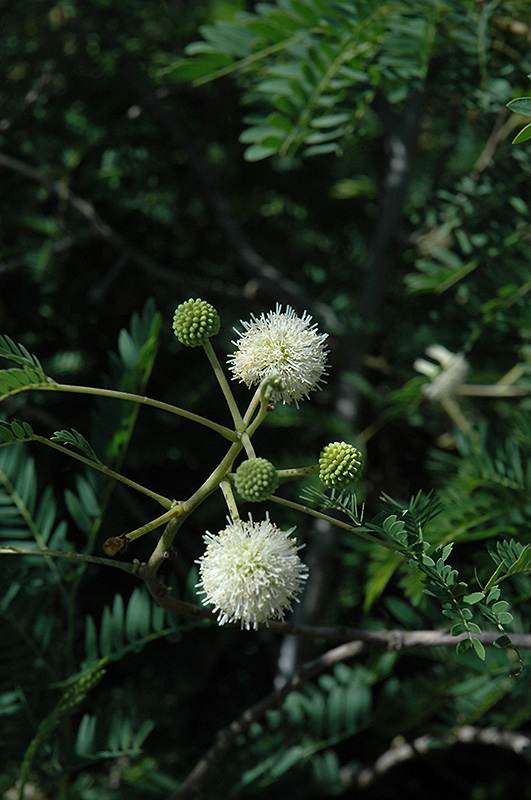Plant Finder
Height: 16 feet
Spread: 10 feet
Sunlight:
![]()
![]()
Hardiness Zone: 8b
Other Names: Senegalia, Guajillo, Thornless Catclaw, Huajilla
Description:
A spreading shrub with many stems from the base; ball shaped white flowers that appear in late winter, into spring, are very fragrant; delicate bi-pinnate foliage is delicate and almost fern like; an excellent water conservation shrub for borders
Ornamental Features
Berlandier Acacia features showy clusters of fragrant white pincushion flowers with creamy white overtones along the branches from late winter to early spring. It has attractive green evergreen foliage which emerges chartreuse in spring. The small narrow bipinnately compound leaves are highly ornamental and remain green throughout the winter.
Landscape Attributes
Berlandier Acacia is a multi-stemmed evergreen shrub with a shapely form and gracefully arching branches. Its average texture blends into the landscape, but can be balanced by one or two finer or coarser trees or shrubs for an effective composition.
This is a relatively low maintenance shrub, and should only be pruned after flowering to avoid removing any of the current season's flowers. It is a good choice for attracting birds, bees and butterflies to your yard. It has no significant negative characteristics.
Berlandier Acacia is recommended for the following landscape applications;
- Accent
- Mass Planting
- Hedges/Screening
Planting & Growing
Berlandier Acacia will grow to be about 16 feet tall at maturity, with a spread of 10 feet. It has a low canopy, and is suitable for planting under power lines. It grows at a medium rate, and under ideal conditions can be expected to live for approximately 30 years.
This shrub does best in full sun to partial shade. It prefers dry to average moisture levels with very well-drained soil, and will often die in standing water. It is considered to be drought-tolerant, and thus makes an ideal choice for xeriscaping or the moisture-conserving landscape. It is not particular as to soil pH, but grows best in sandy soils. It is somewhat tolerant of urban pollution. This species is native to parts of North America.




